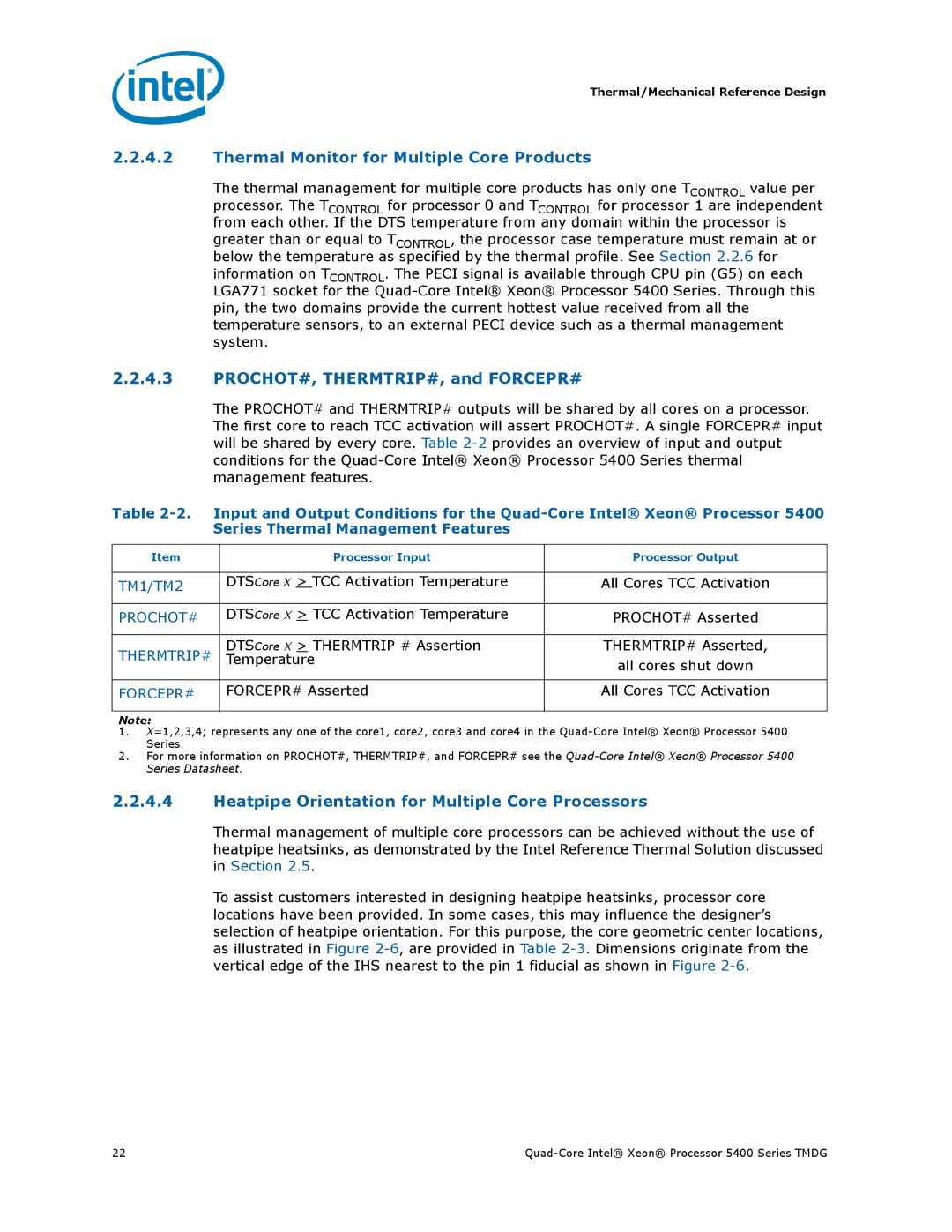
Thermal/Mechanical Reference Design
2.2.4.2Thermal Monitor for Multiple Core Products
The thermal management for multiple core products has only one TCONTROL value per processor. The TCONTROL for processor 0 and TCONTROL for processor 1 are independent from each other. If the DTS temperature from any domain within the processor is
greater than or equal to TCONTROL, the processor case temperature must remain at or below the temperature as specified by the thermal profile. See Section 2.2.6 for
information on TCONTROL. The PECI signal is available through CPU pin (G5) on each LGA771 socket for the
2.2.4.3PROCHOT#, THERMTRIP#, and FORCEPR#
The PROCHOT# and THERMTRIP# outputs will be shared by all cores on a processor. The first core to reach TCC activation will assert PROCHOT#. A single FORCEPR# input will be shared by every core. Table
Table
Item | Processor Input | Processor Output |
|
|
|
TM1/TM2 | DTSCore X > TCC Activation Temperature | All Cores TCC Activation |
|
|
|
PROCHOT# | DTSCore X > TCC Activation Temperature | PROCHOT# Asserted |
|
|
|
THERMTRIP# | DTSCore X > THERMTRIP # Assertion | THERMTRIP# Asserted, |
Temperature | all cores shut down | |
|
| |
|
|
|
FORCEPR# | FORCEPR# Asserted | All Cores TCC Activation |
|
|
|
Note:
1.X=1,2,3,4; represents any one of the core1, core2, core3 and core4 in the
2.For more information on PROCHOT#, THERMTRIP#, and FORCEPR# see the
2.2.4.4Heatpipe Orientation for Multiple Core Processors
Thermal management of multiple core processors can be achieved without the use of heatpipe heatsinks, as demonstrated by the Intel Reference Thermal Solution discussed in Section 2.5.
To assist customers interested in designing heatpipe heatsinks, processor core locations have been provided. In some cases, this may influence the designer’s selection of heatpipe orientation. For this purpose, the core geometric center locations, as illustrated in Figure
22 |
|
